Michael Walters
Notes from the peninsula
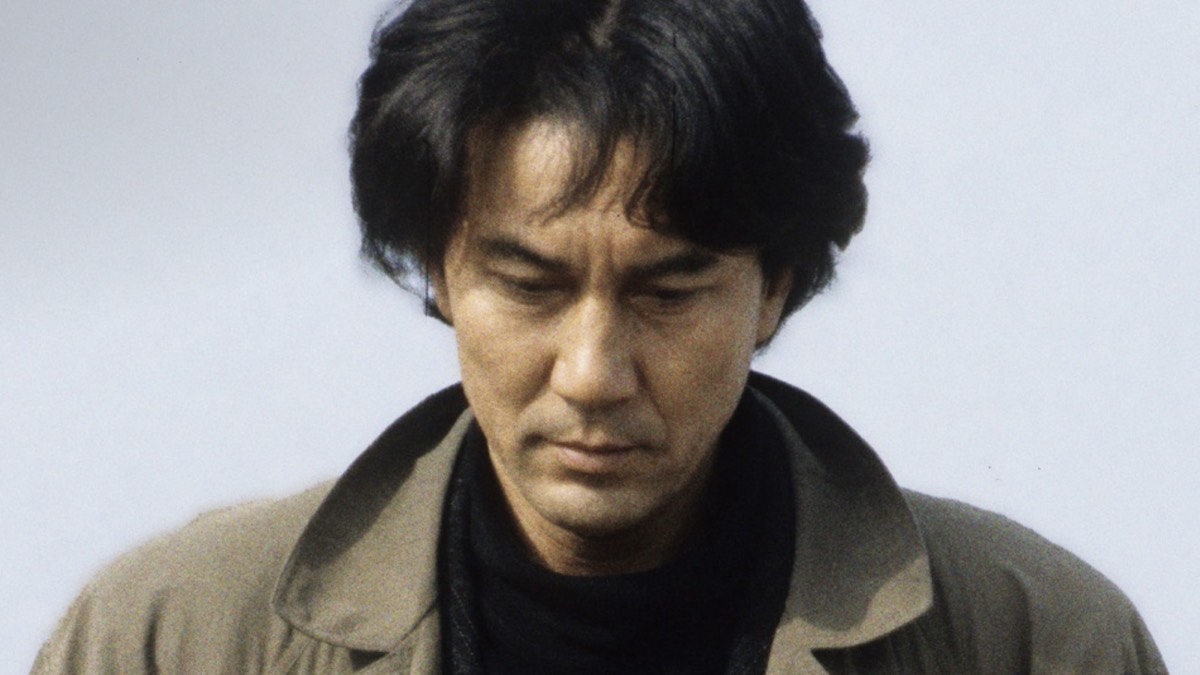
Cure (1997)
Director: Kiyoshi Kurosawa
How much control do we have over what we do? What do we ever choose to do in full consciousness? Takabe, a detective in Tokyo, investigates a series of murders, each by a different killer, but all carving a cross into their victims throats. The trail leads him to Mamiya, a man with extreme short-term memory loss. As Takabe talks with his suspect, Takabe’s world begins to crumble.
Masato Hagiwara gives a masterful performance as Mamiya, equal parts creepy, charismatic and frustrating. Once you understand what’s going on, you start to notice the small movements and seemingly inconsequential decisions he makes, and how they play in to the whole. Whenever he is with Takabe, you fear for Takabe’s sanity. Those conversations make me think of both Silence of the Lambs and Se7en. There are also stylistic choices in the film that we see again in Pulse three years later.
The less you know about this film going in, the more powerful its effect is, which is apt for the subject matter. It makes you feel deeply uncomfortable, because it shows how ordinary people can do horrific things, and rationalise it as normal. The horror is existential, and the questions it asks are philosophical. Cure is potent as hell.

Spring (2014)
Director: Aaron Moorhead and Justin Benson
If Guillermo del Toro shot a film scripted by David Cronenberg, based on a story by HP Lovecraft, then had it edited by Richard Linklater, you would get Spring. I thoroughly enjoyed Aaron Moorhead and Justin Benson’s time-puzzle film, The Endless, so I was excited for this. I was not expecting the unexpectedly strong vibes of Before Sunrise.
Evan’s mother dies, and the night after her funeral, in the bar where he works, he gets into a fight and loses his job. He has no family or girlfriend, so on a whim he uses his savings to go backpacking in Italy. In a spectacularly beautiful coastal town he meets Louise, who is not the research student she claims to be.
The Italian countryside gets under Evan’s skin, and he begins to rediscover his joie de vivre. He falls in love with Louise, but she is hiding her real form from him. The camera begins to linger on insects, worms and dead animals. Evan is still processing his mother’s passing, and while Louise might represent spring after his personal winter, she also represents death.
As much as this is a fairy tale horror romance, where the beauty is the beast, this is also a film about male relationships. Back home, Evan’s best friend is a sweetly immature stoner, and at the start of his trip in Italy, he hooks up with two amusingly awful British backpackers. Once he arrives in the Italian town, he begins to notice the old men drinking coffee and playing chess in the square, and he falls into an awkward friendship with the farmer he labours for in exchange for a room. Being in a foreign land, meeting these men, and of course Louise, allows him to get to grips with his personal crisis.
Letterboxd: Spring (2014), dir. Aaron Moorhead and Justin Benson.
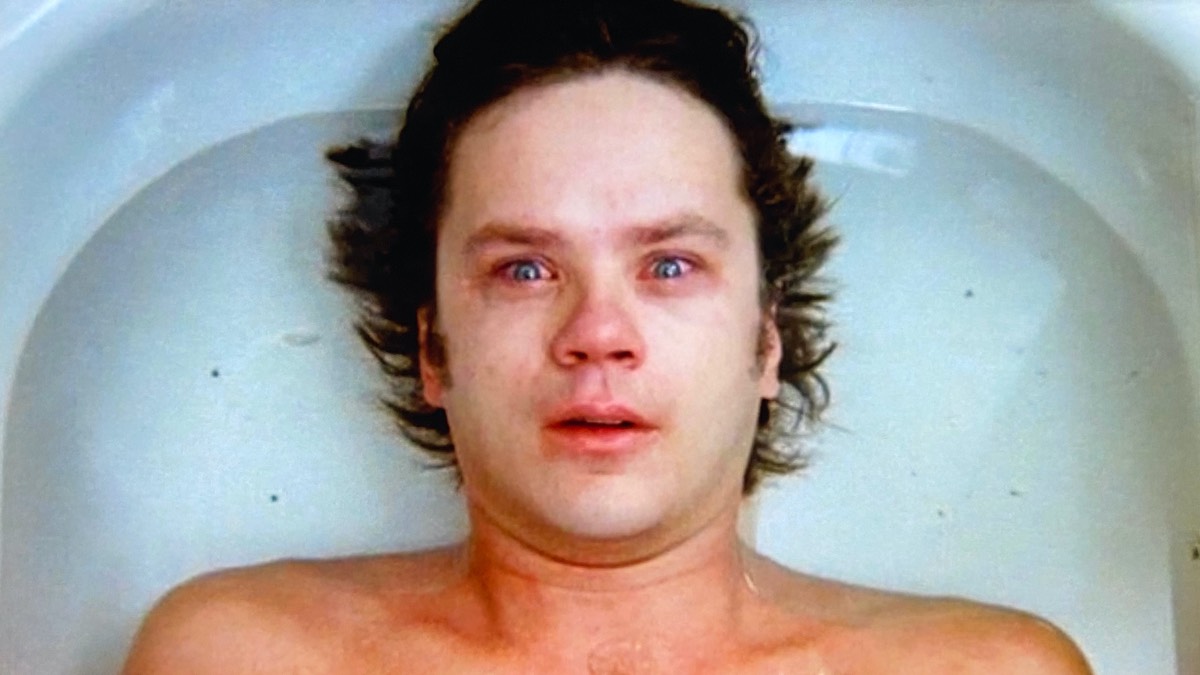
Jacob’s Ladder (1991)
Director: Adrian Lyne
Jacob’s Ladder treats the subject of the Vietnam war with a little more respect than Piranha. Jacob is beset by visions and fever dreams. We constantly switch between realities, from the Vietnamese jungle, to his home in New York City, and it’s bewildering, for him and us. I often wrestle with ways of getting more fantastical imagery into my realist stories, and this film’s solution is ingenious. It has actual cool-as-hell demons in it, and it still feels art house. Tim Robbins is magnificent.
There is a shot around the halfway point of this film that made me think about the nature of film-making compared with writing prose fiction. Jacob is lying in the bath having just regained consciousness from a fever, and he realises that the wonderful dream he’s woken from was not real, and he looks so shocked and sad, I was deeply moved. One of the creative writing courses I did many years ago described how the metaphor of film can be useful in writing fiction. It advised the writer like a director and cinematographer, with scenes built of shots and cuts, with entrance and exit points, and so on. It’s only a small leap to wonder how the writer is like an actor too. Watching Jacob come out of his dream, I realised I couldn’t reproduce my experience of that image in prose. The camerawork, editing, acting, sound composition — all of it contributed. Words alone could create a different version of that image, but it would be different.
That got a bit philosophical. Anyway, the film is a masterpiece — ambitious, emotional, and beautifully constructed.
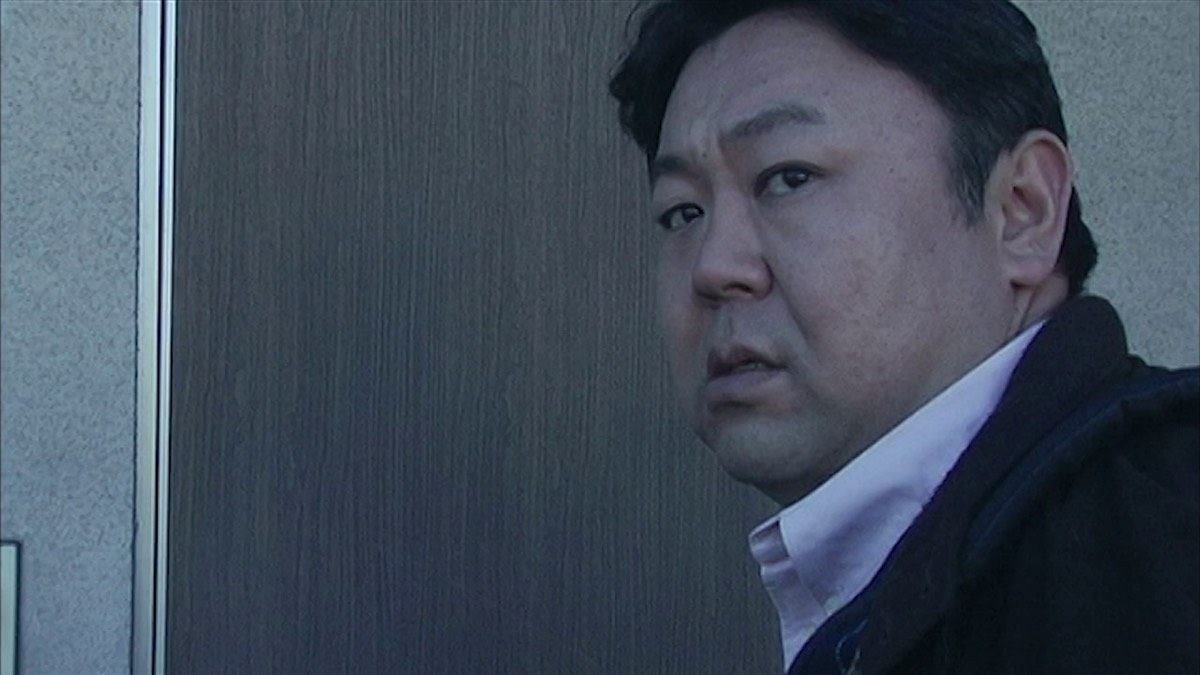
Noroi: The Curse (2005)
Director: Kôji Shiraishi
Kobayashi has such a soft face, and is kind, but he is also dogged and brave. We know from the start things will go badly for him, but we still hope he will be okay. It isn’t clear for some time what Kobayashi is investigating. This mockumentary is made from grainy handheld video and low-resolution clips of Japanese televison shows. It revels in its fragmentary, low-fi nature.
We watch video tapes, and we see video tapes passed around, as we follow Kobayashi, a paranormal investigator, with his cameraman Miyajima, around the scuzzy edges of Tokyo. There are dead pigeons on balconies and broken appliances in gardens. The pictures are often shaky and pixelated, which makes it hard to watch in places on a modern 4K screen. You feel you are watching something you shouldn’t be.
I was turned on to this by the Gaylords of Darkness, who loved this film as much as I do. The screenplay must have been a devil to put together. At the mid-point, the connections between the events become more clear, and the sense of dread increases dramatically. Like the patterns Kagutaba’s victims feel compelled to create, the narratives are weaved out of sight, and come together in the final third. This is an unsafe, unforgettable film.
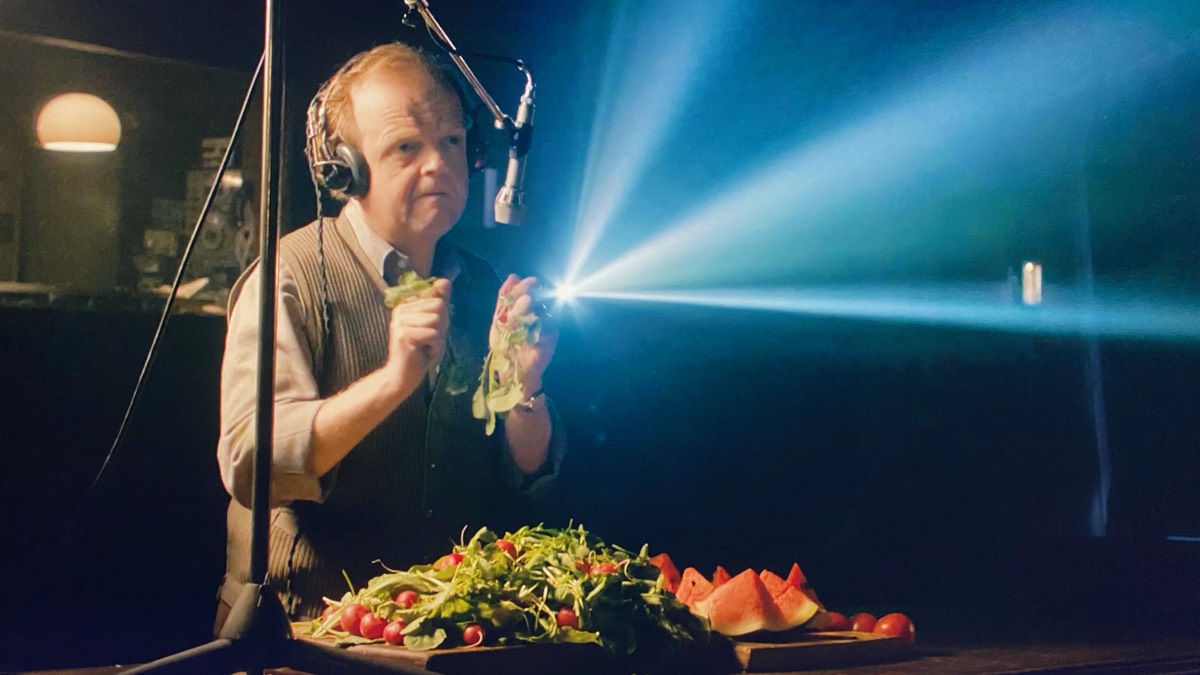
Director: Peter Strickland
Another horror film that divided people, and another edge to the horror film landscape. Renowned film sound technician Gilderoy is a fish out of water in a remote Italian sound studio. He thinks the film he’s agreed to work on, The Equestrian Vortex, is about horses, but in fact is an Italian horror film about the torture of witches — although as manipulative director Francesco says, one of the women does ride a horse. He is immediately homesick. The studio staff are unhelpful, he doesn’t speak Italian, and he is socially awkward.
We never see the violence in the film he is working on, but we do see the planning sheets describing the sounds he needs to replicate. To comfort himself, he listens to tapes of sounds at his mother’s house, like her doorbell, and birdsong in her garden. He is emotionally repressed, but hypersensitive to the world around him, and a master of both the technical work of sound design, and the more practical work of making everyday objects sound like something else. Melons become chopped flesh. Ripped radish stalks are witches having their hair torn out. Gilderoy’s face is a treat as he shows a hidden sadistic pleasure to his work.
The camera lingers on objects in extreme closeups — tape reels, sound dials, gloved hands, microphones – just as it does on the actors’ faces as they dub the sounds and screams of witches and, most amusingly, the ‘dangerously aroused Goblin’. The Italian men are obnoxious, and the women suffer for it. Gilderoy is bullied into doing things he does not want to do, and his mental health suffers.
There are so many wonderful touches to this film, from the way the power keeps cutting out, to the way scenes blur seamlessly into each other. Like Knife+Heart, this film plays with form, with a film within a film, but here the film we are watching bends and loops, mirroring Gilderoy’s experience, and perhaps his desires. There are philosophical questions about how things start and when they are finished. I loved it.
Letterboxd: Berberian Sound Studio (2012), dir. Peter Strickland.
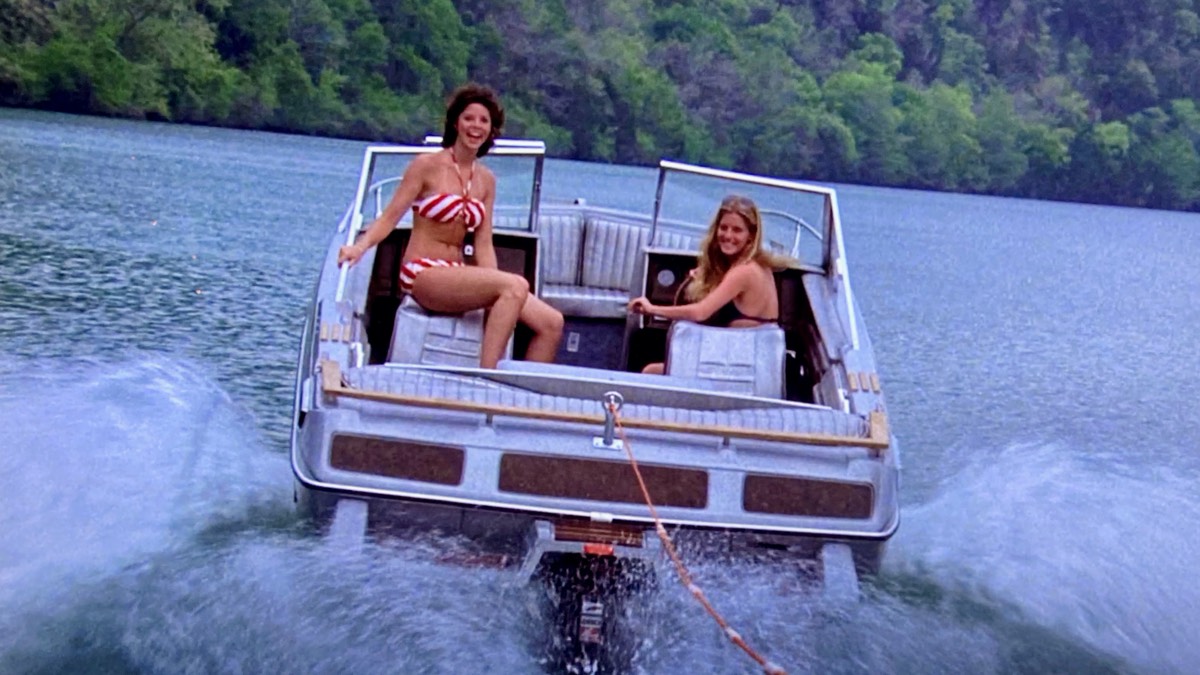
Piranha (1978)
Director: Joe Dante
Being nibbled to death by a swarm of piranha is a different agony, I imagine, to being bitten in half by a great white shark. The standard issue opening victims, David and Barbara, go swimming in a pool at a seemingly deserted top secret military compound in the middle of the night. The unfortunate Barbara jokes with David she isn’t the Creature from the Black Lagoon, just before they are both eaten alive. We cut to Maggie, the woman sent to find them, playing a Jaws video game.
This film wears its ripoff credentials on its sleeve, and matches Jaws beat for beat, from the steady stream of individual deaths, to the business-focussed mayor, to the big event in the water, even throwing in a water skiing scene à la Jaws 2. The performances are over-the-top, and the music is heavy-handed, but it’s paced perfectly, and the special effects are a minor miracle on the film’s tiny budget.
Where Jaws’ fourth of July set piece results in one death, here Dante unleashes the piranha on a summer camp of pre-teens, and in the finale, there are bloodied bodies everywhere. It’s fun, with some nicely timed comedy moments, but in truth it has a surprisingly dark heart.
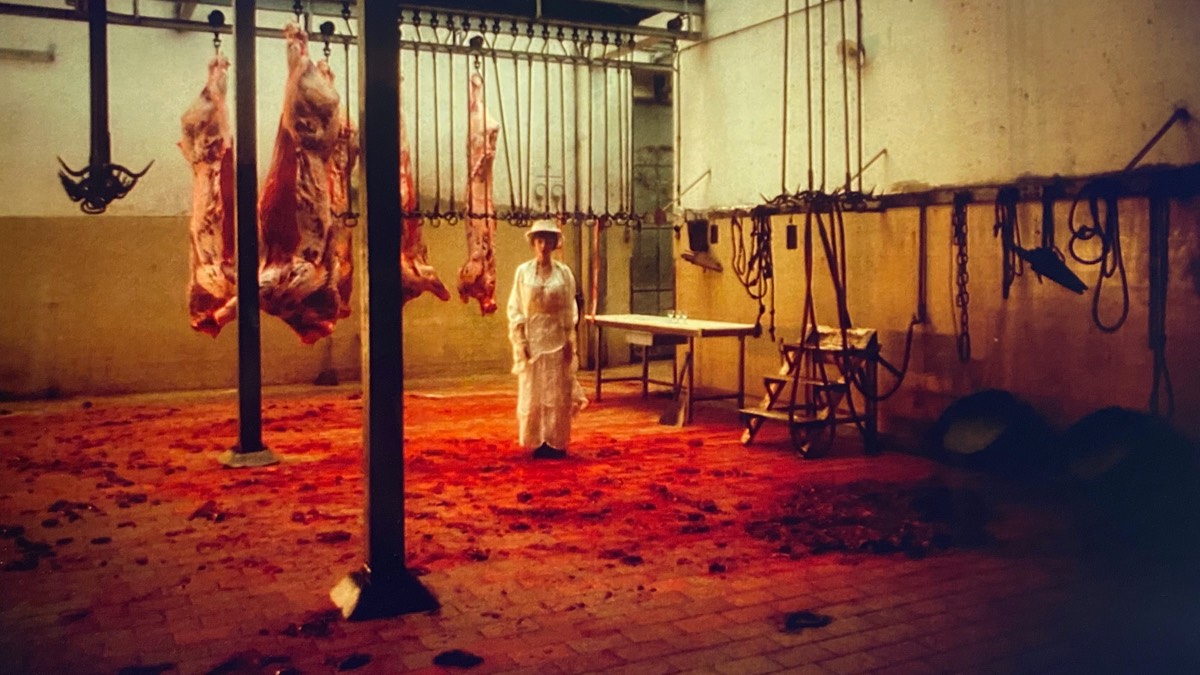
Fascination (1979)
Director: Jean Rollin
Fascination is set in France, 1905, and has a fairy tale vibe, with misty countryside, a splendid French chateau, and a protagonist, Marc, who at the start steals a bag of gold. He hides at the chateau to escape his pursuers, where two women, Elisabeth and Eva, are waiting for the arrival of their marchioness. Marc is arrogant and threatening, but the two women, who are in love with each other, don’t seem bothered. When the marchioness arrives with her entourage for a party, it becomes clear Marc is a play thing for the evening, and might not leave the chateau alive.
It takes a while to get to the heart of Fascination. Marc is so unlikeable, there is a temptation to turn the film off, but once Elisabeth and Eva take the screen, it becomes clear he is not the hero of the film, which is a relief. The story is really Elisabeth’s. The women hold all the power. This is a film about power dynamics, feminism and class. In the opening scene, Elisabeth drinks ox blood at an abattoir to give herself strength. In another, Eva strides across the bridge to the chateau, naked under a black cloak, bearing down on her victim with a super-sized scythe. At the party, when it finally begins, Marc plays a game of blind man’s buff, and the women toy with him. He is dangerous, but he squanders his advantages.
It is a beautifully shot film. The allegorical elements about the aristocracy and the working class might be a little heavy-handed, but there is plenty of fun to be had once the scythe comes out, and the evening’s real game begins.
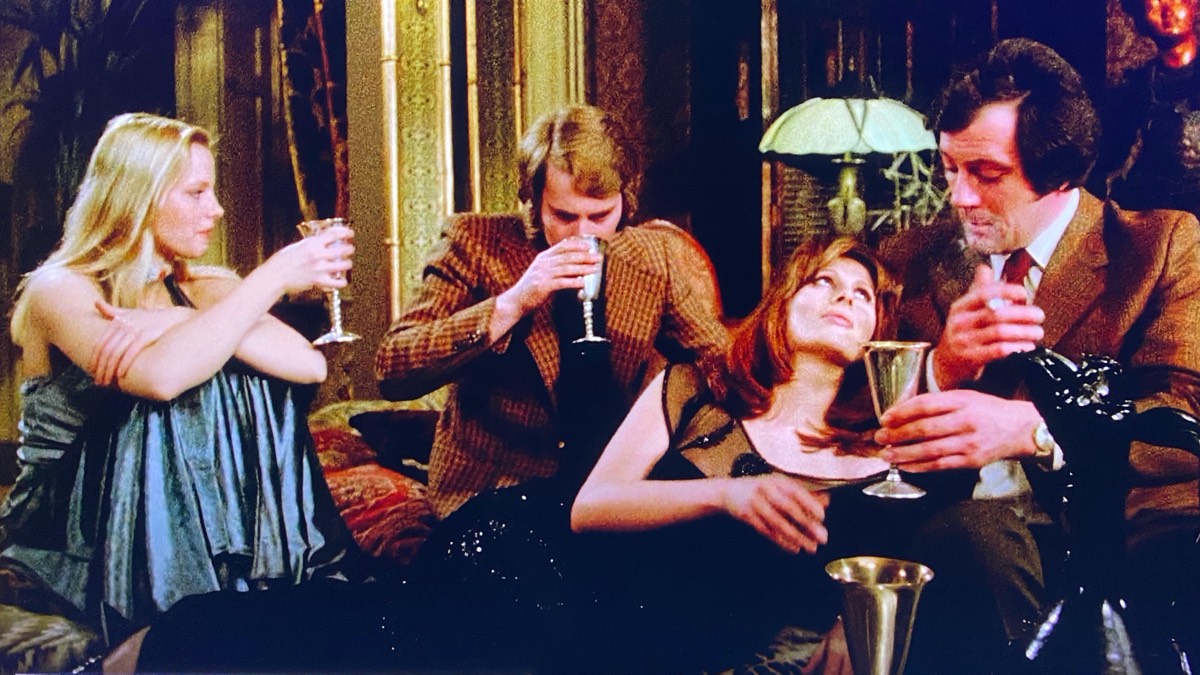
Vampyres (1974)
Director: José Ramón Larraz
I chose Vampyres, the first of my #31DaysOfHorror choices this year that I would say is exploitation cinema, naturally, because of the cover art. After the pitch perfect seventies homage of Knife+Heart, I wanted to go to the source, and having never heard of Vampyres, took the fact it’s on BFI Player as a degree of quality control. That’s how I found myself in the seventies English countryside, stuffed in the back of a cheap caravan parked in the grounds of a gothic country house.
It’s a legitimately good example of a well-made exploitation horror film. Vampires and seduction have always gone together, and the two women who live in the crumbling house lure men there to drink their blood. It reminded me of Harry Kümel’s Daughters of Darkness from two years earlier, and I wouldn’t be surprised if that was an influence. It has oodles of charm, and some memorable images. The sex is wonderfully ordinary, by which I mean the film celebrates the middle-aged naked bodies of both men and women, although you do see more of the women. It’s sleazy, with some questionably slobbery kissing techniques, but sex is integral to the story, and even with the eventual blood-letting, it has erotic moments. Older vampire Fran casts a spell on the unpleasant and aggressive Ted, a spell which might just be his inability to say no to sex, and he becomes a sort of living meal over several days.
There is another strand with a young couple, Harriet and John, in the caravan, where she turns detective, even wearing a trench coat for a key scene towards the end. All the women are hungry in this film, whether for blood or knowledge. Harriet’s curiosity leads to a surprisingly twisted, chilling finale.

Knife+Heart (2018)
Director: Yann Gonzalez
Knife+Heart (Un couteau dans le cœur) is a modern giallo film that plays out in a gay porn production company in the summer of 1979. Anne runs the company, and has broken up with her long-term partner and film editor, Lois. Their films have become stale, and Anne knows it, so when someone brutally murders one of her actors, she uses the experience as inspiration for their next film. As Anne keeps using events in real life to make the films better, her creativity draws Lois back to her, but the killer doesn’t stop claiming victims.
The kills are violent, in particular the opening, although very little is actually seen. The costumes, locations, the film stock for the porn films, the way Lois physically edits film, it all looks perfect. It may be stylised like the classic giallos of the seventies, but where the characters in those were paper thin, Anne and her company are well-written and sensitively brought to life. Vanessa Paradis as Anne is sensational, as is Nicolas Maury’s Archibald. This film company is like a family, although money is always close to the surface of their conversations, and they have a lot of sex.
I find the idea of promiscuity fascinating, not just in sex, but as a representation of abundance. Promiscuity in the projects we choose is one route out of writer’s block. All the porn actors have sex with each other for the camera and enjoy it, even if sometimes they need a little help from ‘Golden Mouth’. It’s exciting watching Anne’s creativity blossom as she rediscovers the fun in her work. She uses the bad things happening to them and turns them into art. Anne’s intuition grows in power as the film goes on.
Scenes switch between real life, the porn films and Anne’s dreams, and sometimes it can take a few seconds to know which you are watching. Some might sneer at the films she makes, but she puts her whole self into them, and as we see at the end, is more than compensated for her labour.
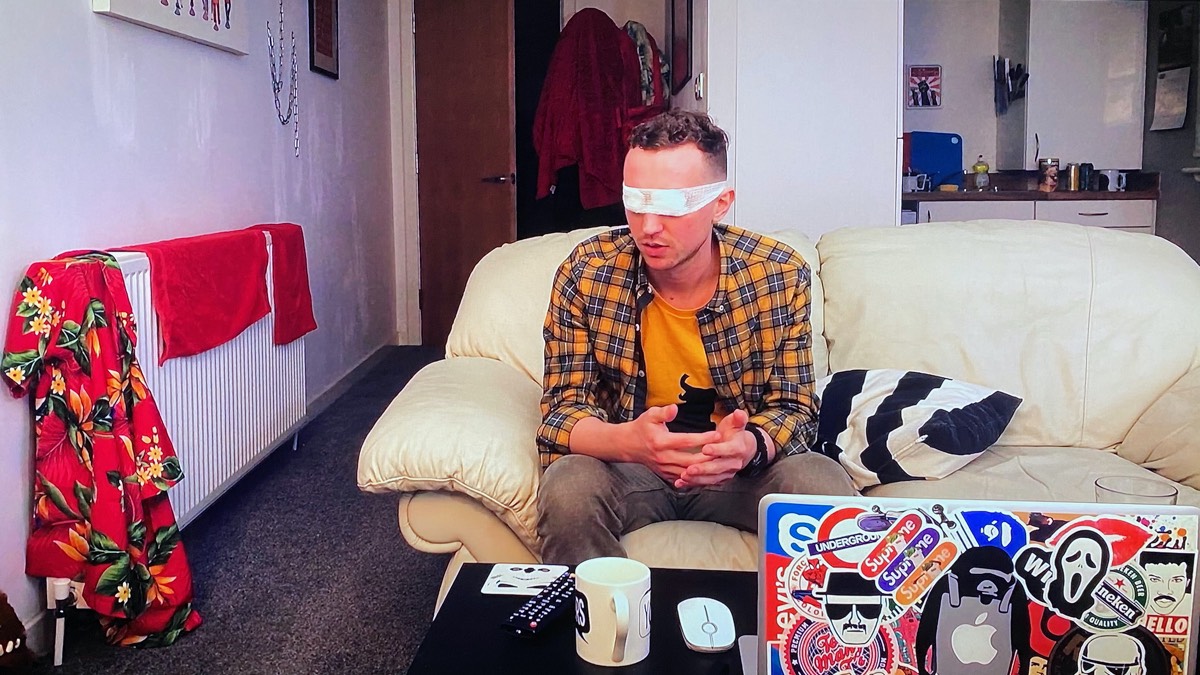
Director: Graham Hughes
Today, cameras are our eyes in the world, and they are no guarantee of the truth. Webcams are ubiquitous. We can all see others and be seen. Social media not only allows that, but quantifies it, and worse, monetises it. We can see how much we are being seen and, sadly, interpret it as how much we are worth.
Video blogger Graham wants to make a name for himself online. When one of his videos seems to prove ghosts exist, it goes viral. He gets the attention he craves, but there is also money to be made, and paranormal investigator Steve joins forces with him to make the most of the opportunity.
Graham and Steve are working in the attention economy. The absurdity of that becomes clear when we watch Gabrielle, who runs a channel debunking the paranormal, film an interview with Graham and Steve, while they film her filming them for their channel, and all the while she has a secret camera recording it all. Everyone has an angle. (There is an ingenious scene that plays with angles, using a 360-degree camera at an online seance.)
As Graham’s mental health deteriorates, the stakes get higher, and it feels less like a game. We are as unsure of what is really happening as he is. Unlike the isolated characters in Pulse, Graham has a channel to broadcast on. A lot has changed in twenty years, but people still feel lonely, and they want to be seen. But as both films demonstrate, so do the dead.
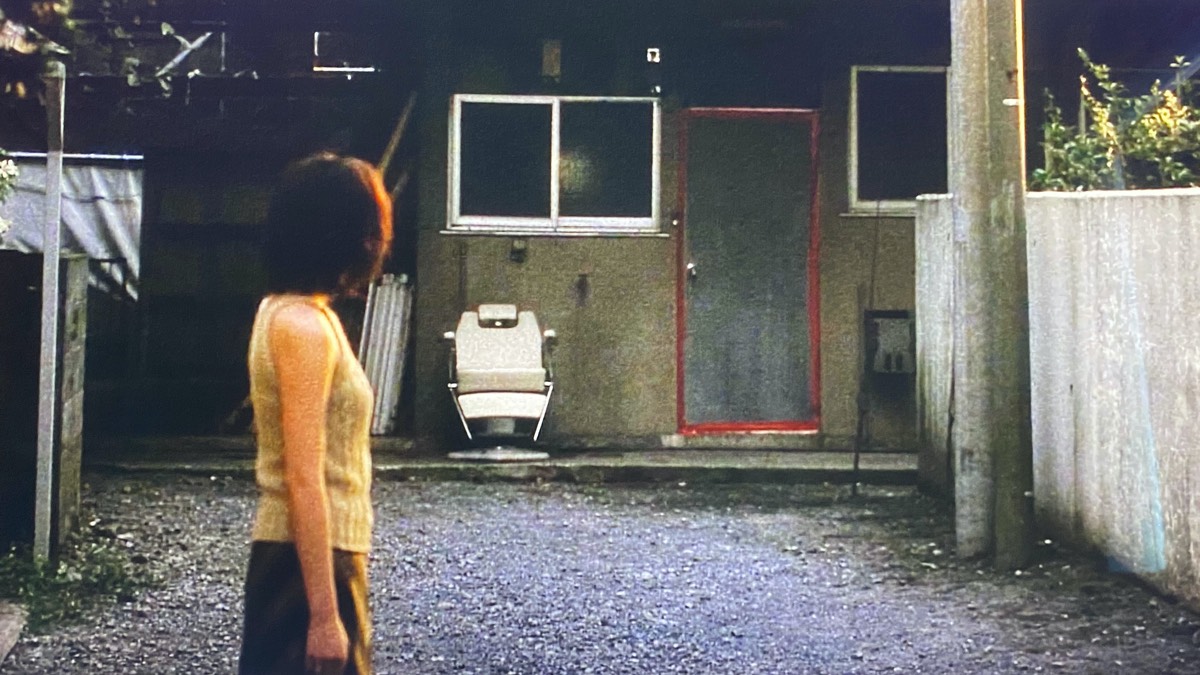
Pulse (2001)
Director: Kiyoshi Kurosawa
The Tokyo in Pulse is empty and eerie. People are lonely and disconnected from each other. The characters are all young and, in one way or another, alone.
We observe a man, Taguchi, in his home, through a low resolution camera of some kind, and we wonder who is watching him, apart from us. One of his work colleagues, Michi, comes to pick up a computer disk, and he hangs himself in front of her. Meanwhile, at the university, Ryosuke, a charming economics student, tries to install the internet on his PC. Something goes wrong, and he finds himself looking at someone sitting in a room through a camera, and they seem to be looking back at him.
There are cables, wires, hoses and tubes everywhere in Pulse — in the dead Taguchi’s apartment, in the classroom where the wonderful Harue offers to help Ryosuke with his Internet problem, and in the rooftop glasshouse where Michi works — but they are not connected. Screens are a perpetual threat. It’s all depressingly prescient.
Lots of unsettling things happen in the background of shots. Some of the best shocks come in deceptively simple ways. There’s a lot to think about, but it’s left to the viewer to interpret, and Kurosawa takes the story to its absolute limits. I can’t believe it’s taken me so long to watch this. It’s a masterpiece.
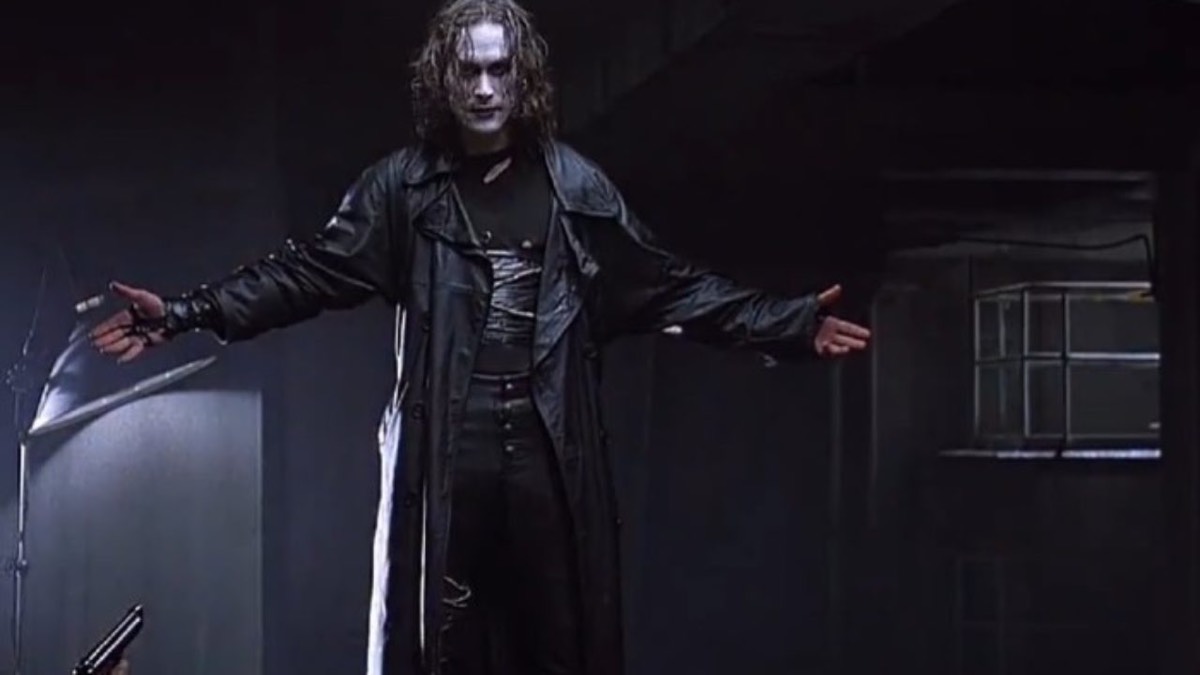
The Crow (1994)
Director: Alex Proyas
The montages, quick cuts and heavy metal of The Crow is a bit of a shock after the more sedate charms of The Fog. This is a none-more-gothic revenge story to complete my revenge triptych.
Eric and his fiance Shelly are murdered by a gang of men on the night before their wedding. Like Soueliman in Atlantics, and the lepers in The Fog, Eric’s soul cannot rest until he gets justice. One year later he climbs out of his grave, and a crow leads him to each member of the gang for vengeance.
There are a lot of eyes in The Crow. The gang throw Eric through an eye-like window that looks over the city. Top Dollar (the wonderful Michael Wincott radiating wrongness and oozing the worst kind of charisma) reveres eyes and removes them from his victims. Eric can see through the eyes of the crow that watched him die. The air of black magic is surprisingly disturbing, especially with the evil half-siblings, Top Dollar and Myca. Eric wants an eye for an eye.
The music and clothes make it a pure shot of nineties nostalgia. It’s an emotional film, helped by the fact it has a sense of humour. The characters and relationships are real enough to make you care. The Crow has a lot of heart. It really is top dollar.
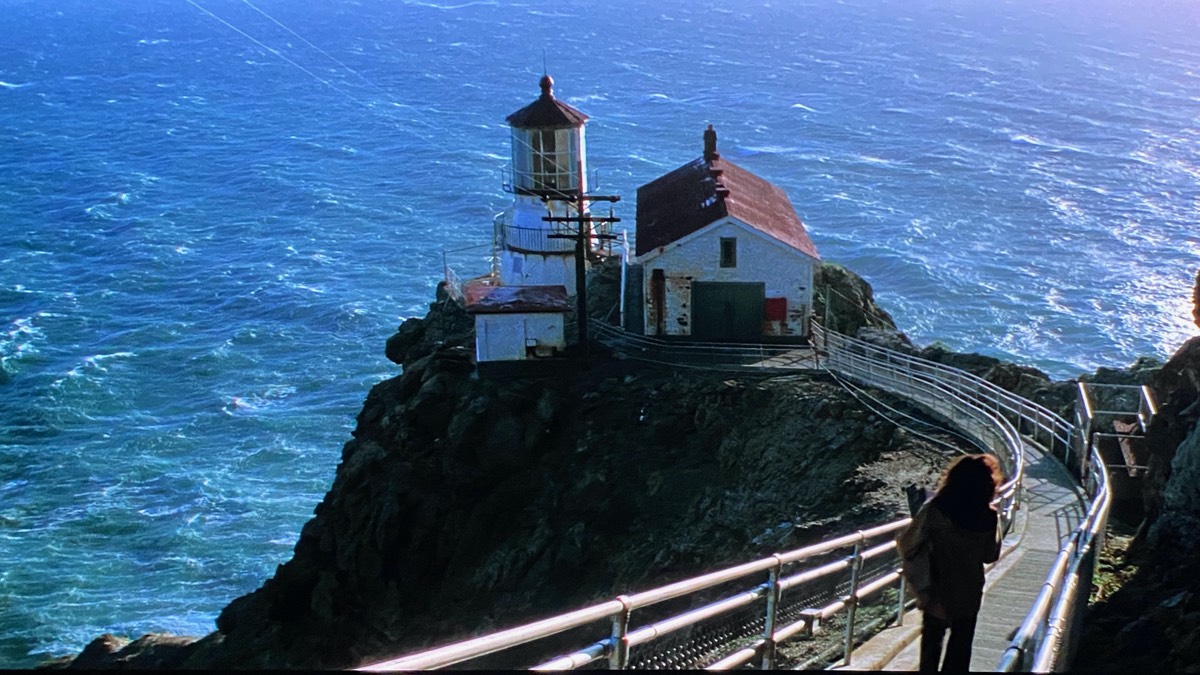
The Fog (1980)
Director: John Carpenter
I was always going to watch The Fog at some point in these #31DaysOfHorror, but I didn’t expect it to be so soon. It was meant to be a comfort pick for later, when things usually are a little more fraught, and the 4K restoration sort of made it ‘new’. But after Souleiman and his friends came from the sea for revenge in Atlantics, The Fog was the natural next pick.
John Carpenter is one of my favourite directors, and I still haven’t seen many of his films. The Fog is an old favourite. I watched it over and over again on VHS as a kid, recorded off the television, and it embedded Adrienne Barbeau’s radio DJ, alone in a lighthouse on the edge of town, as a lifelong crush. It’s also fun to see Jamie Lee Curtis transform from the terrorised highschooler in Halloween to a horny hitchhiker happy to have sex with the crusty Tom Atkins.
The fictional Antonio Bay is either on the Oregon coast, or California, but either way it faces the Pacific. The water is just as wild and potent here as in Dakar. I had forgotten the opening quote by Edgar Allen Poe, as well as the little HP Lovecraft references to Arkham Reef and Waitely on the coastguard radio. Debra Hill, who wrote and produced The Fog, knew her horror.
It’s a tight, fast-paced film, full of clever shots and details. It starts with a twenty-minute tour-de-force of atmospheric film-making. Cinematographer Dean Cundey gives a masterclass in creating mood and tension. The 4K version is beautiful too. It’s one of those films that you only have to watch for a couple of minutes, no matter how many times you’ve seen it, and before you know it, you’ve watched it to the end.
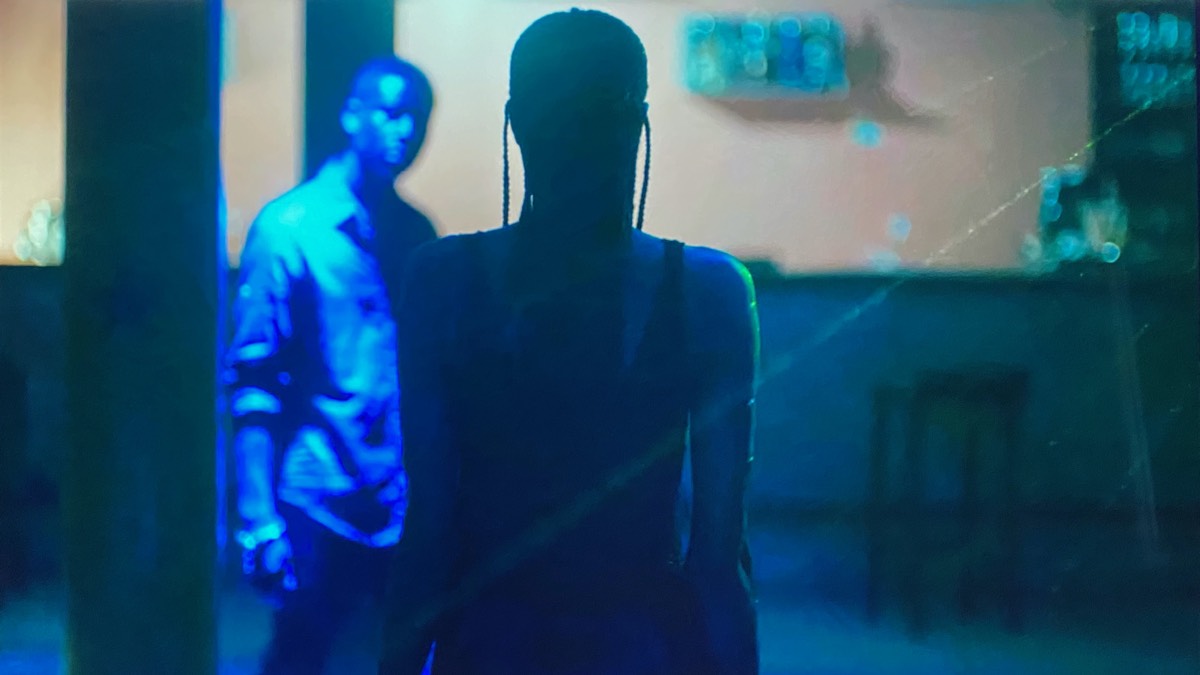
Atlantics (2019)
Director: Mati Diop
For the second film in my #31DaysOfHorror I wanted something recent — from something old to something new. Atlantics had been on my Netflix queue for months. I knew it was a ghost story, and that it won the 2019 Cannes Film Festival Grand Prix award. It’s art house, and it’s a romance, but it’s hardly a horror film. It is, however, fascinating.
In Dakar, Senegal, on the westernmost tip of Africa, the Atlantic Ocean constantly pounds the coastline. Ada is in love with Souleiman, who is compelled by his financial situation to leave her in Dakar and set out with his friends on a boat for Spain. Dakar is a tough place to live, and there is a great deal of poverty. The economic reality for Ada is that she has to marry Omar, a wealthy businessman. Ada’s girlfriends are obsessed with money, and they think Ada is crazy for mooning after Souleiman. On her wedding night, the wedding bed catches fire, and one of her friends says she saw Souleiman in the street. That brings the police, and the mystery deepens.
The wealthy exploit the poor, mothers make their daughters marry for money, the police are corrupt, and the mixture of soothing cinematography and slow narrative pace can only partially conceal the film’s burning sense of injustice. It’s a subtle, sensual film — curtains blow in the constant breeze, glass reflects sunlight — but, the camera always returns to the sea. The sea is always there. It’s a comfort, a temptation, and in the end, a bringer of justice.
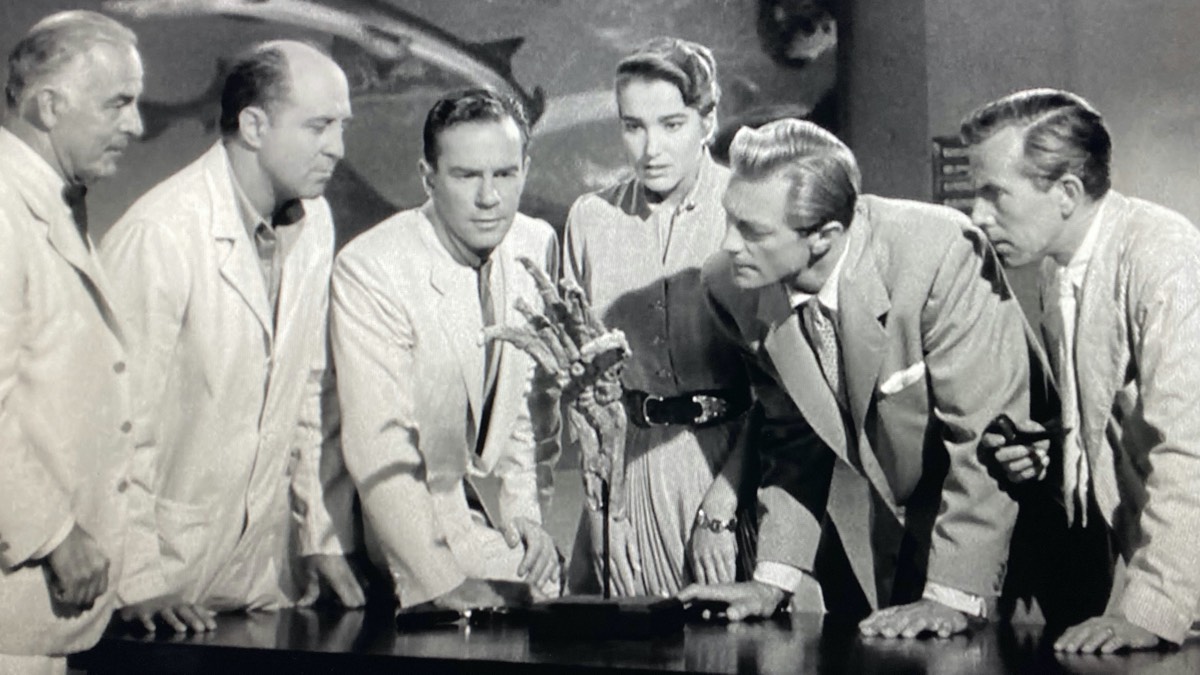
Director: Jack Arnold
I wanted to start this year’s #31DaysOfHorror with a classic. I’m trying to watch only films I haven’t seen, with one or two exceptions, and when I sorted my iTunes movie library by release year, Creature From the Black Lagoon was the oldest unwatched horror film I owned.
I knew the Creature was one of the Universal Classic Monsters. I’d heard Guillermo del Toro talk at length about how much he wanted to see the monster get the girl at the end, and how that had fed into him making The Shape of Water. I’d also listened to Mallory O’Meara talk on the Shock Waves podcast about her book on Creature designer, Milicent Patrick. I’d heard lots about the film, but never seen it for myself.
I rarely watch older films. There is so much I haven’t seen from the seventies, eighties and nineties, that I never think to go back further. I mention this because the first thing that struck me about Creature from the Black Lagoon was its gender dynamics. I still can’t decide if they were depressingly old-skool or surprisingly modern. Is Kay passive or is she actually in charge of her male relationships? Kay, her boss David, and his boss Mark, are scientists going up river into the Amazon on a geology expedition. Kay is going out with David, but used to go out with Mark. She wants David to marry her, but he doesn’t see the point. Mark starts to make moves on Kay again, and so we see Kay spend most of her time smartly, but also tragically, trying to keep them both happy. I can’t remember when I last saw two men compete so openly for a woman in a film where it wasn’t a romantic comedy.
Steven Spielberg was clearly inspired by this for Jaws — the camera shots of the woman from below, the duh-dum orchestral score, and the Creature caught in the net bending the boat’s rigging. The shark in Jaws attacks for food, although it could be a metaphor for the nuclear bombs dropped by the United States in Japan, or even the shadow of tourist capitalism in Amity. The Creature from the Black Lagoon attacks because people are afraid and attack him. The Black Lagoon as a metaphor for repressed desire is pretty on the nose.
In a beautiful sequence, Kay, wearing a white costume, swims on the surface, while the shadowy creature mirrors her in the water beneath. He seems enchanted by her. The love triangle between Kay, David and Mark, also has a mirror in the triangle between feminine, masculine and monster. Even though the film focuses on the battle between Mark, David and the Creature, this is Kay’s story, and in seeing both the egotistical Mark and the creature die, she ends the film with the wholesome commitment-phobe David. Like Guillermo del Toro, I wish she could have loved the monster instead.
Letterboxd: The Creature from the Black Lagoon (1954), dir. Jack Arnold

October beckons
I love October. I love September too, but October is the favoured child. Since rediscovering my love of the spooky, eerie and horrible, I relish the enthusiasm people have this time of year to cherish the darker paths of the heart. As 2020 enters ‘awful autumn’, I wanted to reclaim my oft-distressed mind with a project that was pure fun. That’s what #31DaysOfHorror is for me. It’s fun.
I’m going to post a horror film on Twitter every day in October, culminating in Halloween (whoooOOooo!). I will also publish a short response to the film on this website. In previous years I’ve watched a film every day, but it wasn’t good for me. Even by stretching my definition of horror to the very edges of what you might think a horror film is, a film a day when you are working full-time with young kids is a lot to handle. It’s overwhelming. This year I started in early September, but I will probably have caught up with myself in the final week of October, so things might get a little hairy with the blog posts. Hopefully I’ll be in a groove by then.
So, with a hopeful heart, perhaps holding hands, we enter the lands of the dead, and we let our shadows guide us.
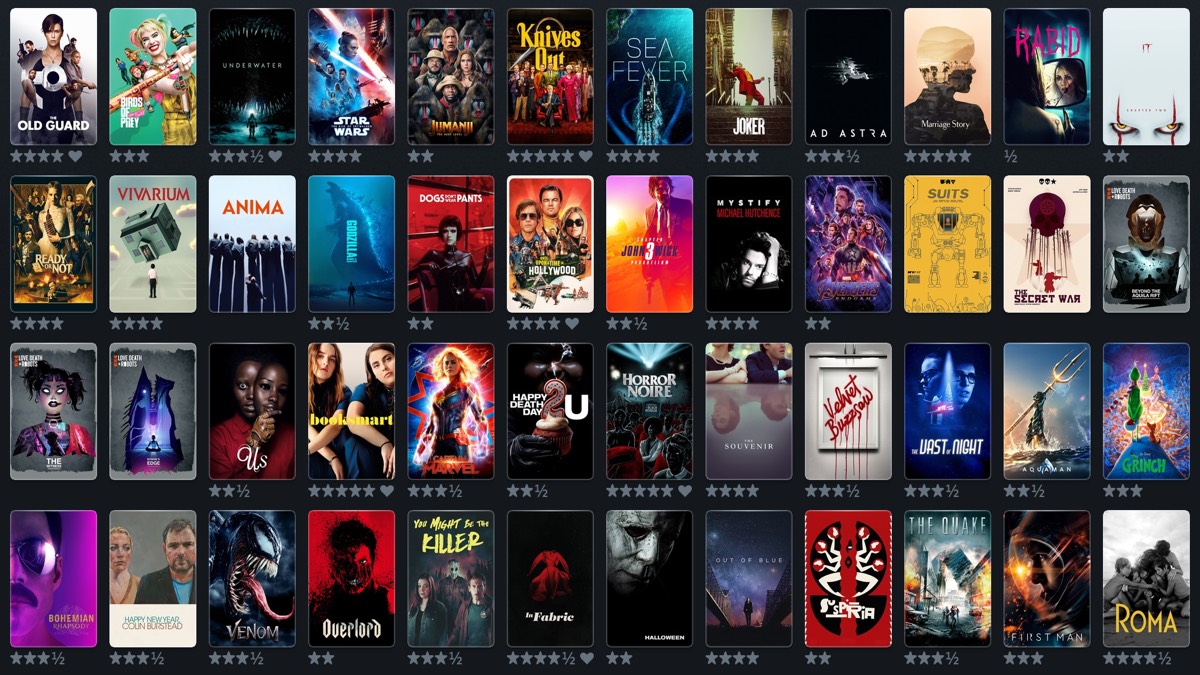
31 Days of Horror, 2020
With 2020 being a demented shitshow, I did fleetingly wonder if I wanted to do #31DaysOfHorror again this year, but then I remembered why I love horror films — they are an escape from reality; they are an outlet for the darkness in me; and they are smart, subversive and funny, as well as gnarly, gruesome and grim. I find them endlessly fascinating, invigorating and fun.
Now #31DaysOfHorror might seem extreme (the original idea was you watch a horror film every day in October, culminating in Halloween, and post your pick each day with the hashtag), and in my first attempt, in 2018, I was such a purist about it, it really did feel extreme. It was actually bad for my mental health. I watched a horror film every day, apart from, ironically, the very last day, Halloween, when I was so emotionally exhausted I completely forgot to do it. My unconscious mind just said no.
But I did watch a lot of films I’d meant to watch for years. There was a lot of fun to be had if I could better pace myself. In 2019, I did it again, this time remembering that horror films vary enormously, and seasoning the stronger fayre with a dash of comedy or sci-fi, which improved the whole experience. I also added the ‘five picks from September’ rule, for days when watching a horror film was a bad idea. That was a good compromise between making it a challenge and looking after myself.
For 2020, I want to go a step further. My plan is to write a short blog post about each film, just a couple of paragraphs to help me process my thoughts, that I can link to instead of the Letterboxd page. Perhaps it will send a few more people to my website and raise awareness of The Complex.
Sadly, I deleted my 2018 Twitter list, but thanks to the magic of Letterboxd, here are both lists for the record.
2019 — 31 Days of Horror
- The Eyes of Laura Mars (1978)
- Ringu (1998)
- A Girl Walks Home Alone At Night (2014)
- Don’t Look Now (1973)
- The Rocky Horror Picture Show (1975)
- Possession (1981)
- Troll Hunter (2010)
- Rabid (1977)
- Jurassic Park (1993)
- Drag Me to Hell (2009)
- Sunshine (2007)
- Count Yorga, Vampire (1970)
- Friday the 13th (1980)
- Carrie (1976)
- A Nightmare on Elm Street Part 2: Freddy’s Revenge (1985)
- It Chapter Two (2019)
- 28 Weeks Later (2007)
- A Nightmare on Elm Street 3: Dream Warriors (1987)
- The Day of the Triffids (1962)
- Anaconda (1997)
- Black Sunday (1960)
- Dead of Night (1945)
- Rec (2007)
- From Beyond (1986)
- The Final Girls (2015)
- Se7en (1995)
- Alien (1979)
- Prometheus (2012)
- Alien: Covenant (2017)
- Trick ’r Treat (2007)
- Joker (2019)
2018 — 31 (cough, 30) Days of Horror
- Predator (1987)
- Hellraiser (1987)
- Halloween H20: 20 Years Later (1998)
- Scream 2 (1997)
- Scream 3 (2000)
- Night of the Demon (1957)
- Cat People (1982)
- Pontypool (2008)
- The Borderlands (2013)
- The Birds (1963)
- Deep Red (1975)
- Season of the Witch (1972)
- A Dark Song (2016)
- Dawn of the Dead (1978)
- Under the Skin (2013)
- American Psycho (2000)
- Repulsion (1965)
- The Company of Wolves (1984)
- It (2017)
- Venom (2018)
- The Evil Dead (1981)
- Suspiria (1977)
- mother! (2017)
- The Fly (1986)
- Poltergeist (1982)
- Jennifer’s Body (2009)
- Night of the Living Dead (1968)
- The Lost Boys (1987)
- Cat People (1942)
- Urban Legend (1998)
- Damn you, unconscious mind! shakes fist
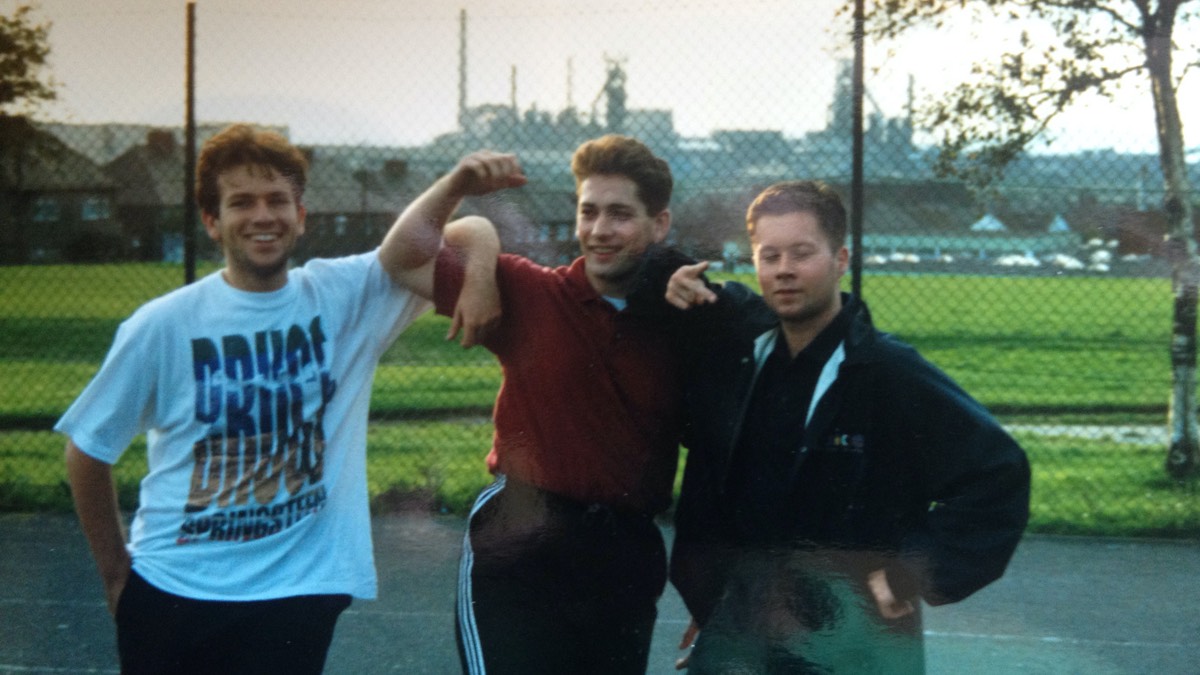
Reality Bites
I first watched Reality Bites when it came out in 1994, the summer of my final year at university. I’d finished cramming for my exams and it was obvious I wasn’t going to be an astrophysicist, or any kind of physicist, and there was nothing else I wanted to do with my life. You would think I was the films prime audience, but I don’t remember thinking much about it, good or bad, beyond having a deep crush on Winona Ryder. Her character, Lelaina Pierce, was a film-maker, and creative, funny, principled, determined, vulnerable, and a fighter. She was everything I wanted in a woman. She was who I wanted to be, in retrospect, and like me, she wanted to do her thing, or do nothing.
In the sweet, terrible month of waiting for my degree results, wandering a familiar campus, hanging out in a house I shared with my closest friends, with no classes and no commitments, I sensed this was a time unlike any I would have again. It felt precious, and I wanted it to last forever. I wasn’t ready to get a job. I wasn’t thinking about the future. I had no plans.
We meet our film heroes immediately after graduation, on a woozily high rooftop, being filmed by Lelaina, who is making a documentary about her friends and their generation. They speak and joke about while her terrible camerawork judders and spins around them, often perilously close to the roof’s edge. It’s dizzying. They are about to jump into their working lives. Vicky (Janeane Garofalo) works at a Gap; Sammy (Steve Zahn) plays guitar in a band; Troy (Ethan Hawke) is a singer. They quickly end up sharing one apartment, but the story only really begins when Lelaina flicks a still-smouldering cigarette into the car of yuppie Michael (Ben Stiller). He crashes into her and they end up going on a date. Her ambition is fired up, but so is Troy’s jealousy.
It’s easy to forget just how big a star Winona Ryder was in 1994, and Ethan Hawke credits her with getting the film green lit. I also didn’t know this was Ben Stiller’s directorial debut. The script was written by Helen Childress, who was closely involved in the film’s shooting. It feels like a collaborative labour of love. Hawke gives an outstanding performance as the prickly, self-hating Troy. I know he ends up having ‘reasons’, but really, he’s such a manipulative dick. Michael, who is sweet in many ways, is also insensitive, and not in Lelaina’s league. She’d have been much better off with me. In South Wales. In my parents’ house.
Reality Bites is still surprisingly affecting. I had low expectations. I’m not sure why. There is something about your early twenties that is particularly painful and potent. You are working out who you are, and the world is only just beginning to press on you. Now, when I am forced by life once again to change course, as I guess a lot of us are coming out of lockdown, Reality Bites is a reminder of the possibilities when you step into the unknown. I want a new tribe around me. I feel a bit lost, vulnerable and unsure, but also hopeful and looking for reserves of courage. Unlike Roger Ebert, I love this film. Twenty-six years on, it really stands up.
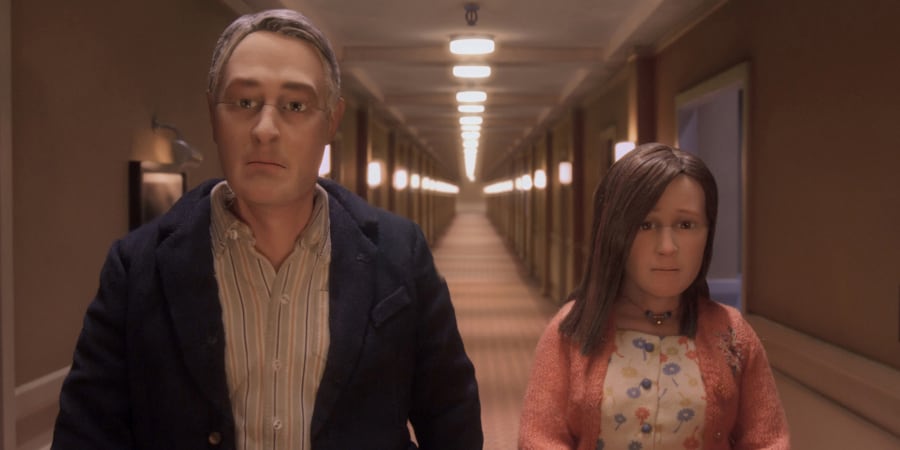
Anomalisa (2015)
Everyone looks the same to Michael Stone. He is in Cincinnati to give a talk at a conference and is staying at the Hotel Fregoli. After failing to make a connection with an ex-lover, he becomes fascinated by an antique Japanese sex toy. He seems unable to make a connection with anyone.
Then he hears a voice through his hotel door. Anonymous Lisa. Anomaly Lisa. Lisa’s voice and face are different, so Michael becomes enraptured by her. His interactions with Lisa in his hotel room are sweet, if a little manipulative. He is desperate for something real in his life, an authentic person who is not like everyone else, something that he hasn’t fucked up. The scene where they make love is beautiful. Animated intimacy surprised me, perhaps because it was more intimate and real than most sex scenes I’ve seen with real actors.
The nightmare he has that night reveals the horror of his situation. In the basement he meets the hotel manager who says he is in love with Michael, and that he can fuck anyone at the hotel but Lisa. Michael is falling in love with her and his unconscious is telling him he has to protect her, because he is going to ruin it, ruin her. He has brought her out of herself and her vulnerability terrifies him. The next morning her voice begins to change and she starts to become like all the others.
Michael has a breakdown on stage as he gives his talk — he is trapped in his own self-absorption, or perhaps a medical condition, we can’t know. He returns home and is faced with the same face wherever he goes. His family is no comfort. He doesn’t know how to connect with his wife or son. But Lisa is transformed by the experience and heads off into her life renewed. It’s a smart reversal in a film full of doubles. Multiples, in fact.
The hotel is a metaphor for Michael’s psyche, twisted and pulsing with his emotional experience. The story is told in three thirty-minute acts: arriving at the hotel, his night with Lisa, and the consequences. The dialogue is awkward and authentic, and it took me a while to realise all the faces and voices of periphery characters were the same. That was unnerving. It made me wonder if I had the same problem as Michael Stone. And the lines on the characters faces were freaky too. I didn’t know they were puppets, so it added to Michael’s paranoid, nightmarish view of the world. You only realise how ill he is at the very end.
It’s a terribly sad story for him, but an uplifting one for Anomalisa. Brilliant.
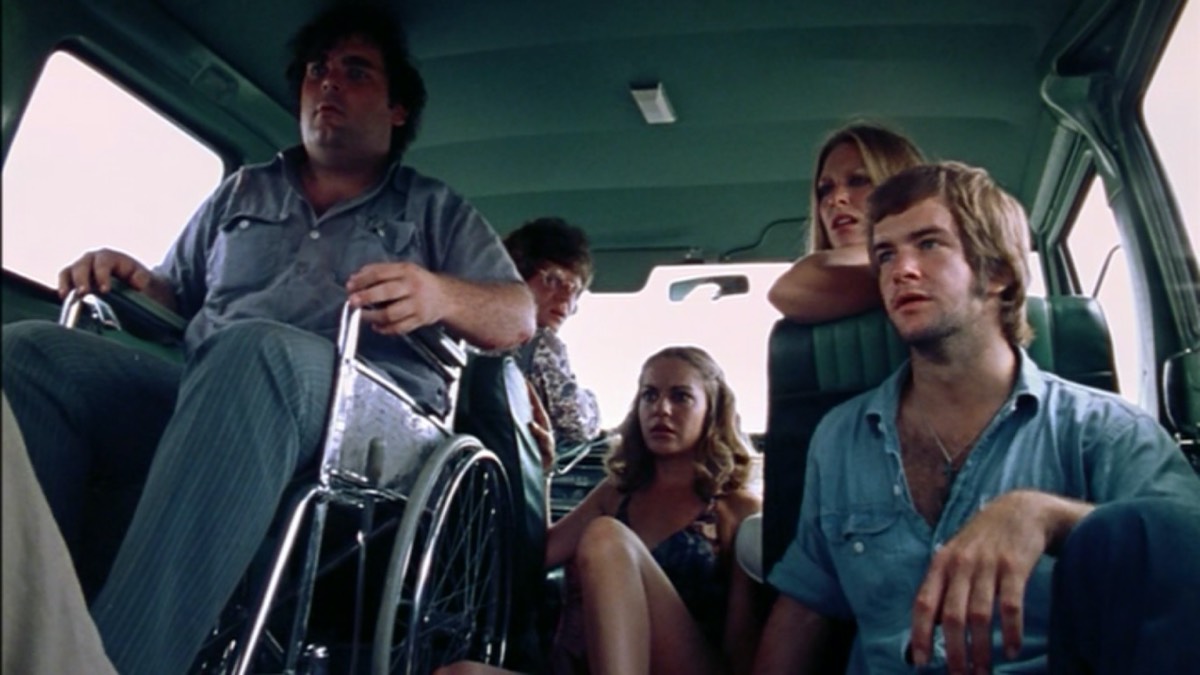
Siblings Sally and Franklin come to a remote part of Texas to make sure their relatives remains haven’t been dug up from a local cemetery in a bizarre, gruesome local crime. But Franklin’s curiosity takes them to the slaughterhouse their grandfather used to own. They are warned not to go there, but in time-honoured tradition, they go anyway. That transgression sets the film in motion.
This is a film about meat. The young people are slaughtered like cattle in a world where meat is life and livelihood. Bones are plentiful in the rural setting, made into art works, mashed together into new creatures. There is beauty and horror in the lives of these people, who are like bacteria, or maggots, stripping life to the bone because it’s all they have. It’s a type of hell.
The film makes meat-eating seem like a transgression, a breaking of natural laws, with the characters hung on hooks, frozen, and butchered like animals. The film seems to say that it is none of our business what people do in their own homes, and if we are too nosy, it’s at our own risk. And all sentient life should be treated with respect. It’s a pro-vegetarianism film.
So many horror tropes seem to constellate here. Young people are picked off one by one. A killer has a phallic, mechanical weapon. Rural communities are dangerous to outsiders who don’t respect the old ways. There is a final girl.
But the thing that struck me most was the beautiful, dread-filled cinematography, the art design, and the overarching intelligence of the script and direction. Almost forty-five years after its release, when of course it was vilified and banned, it’s now clear it’s a masterpiece.